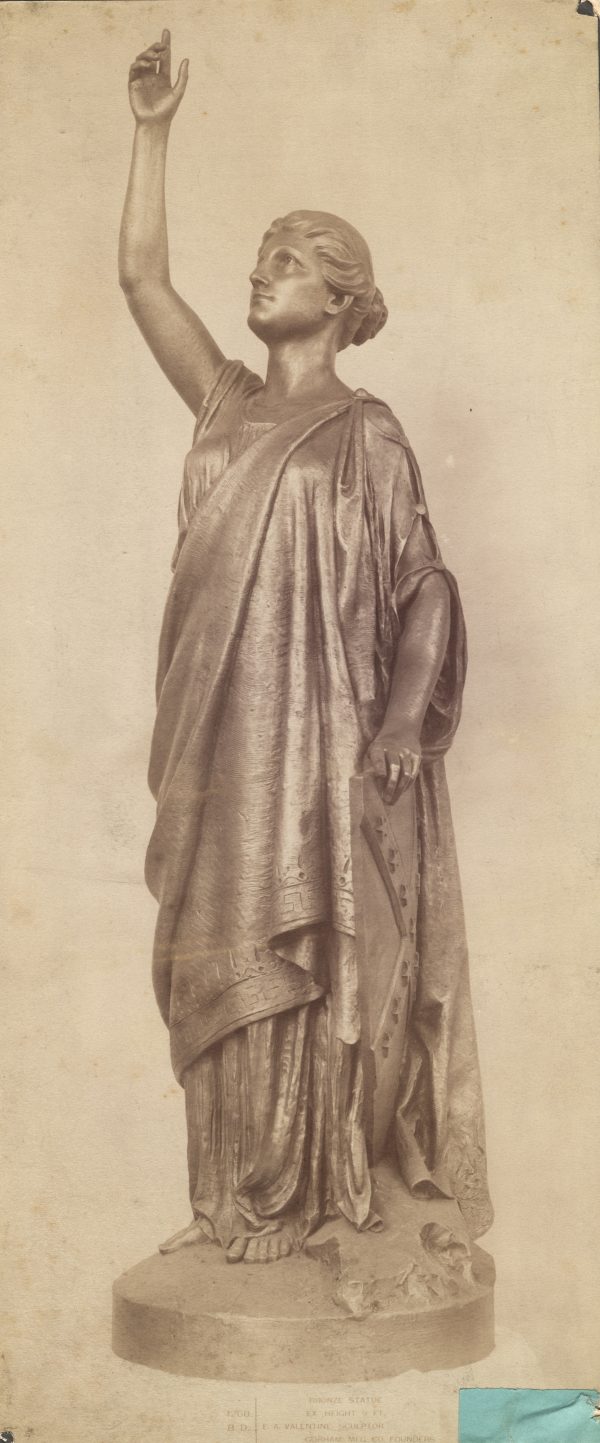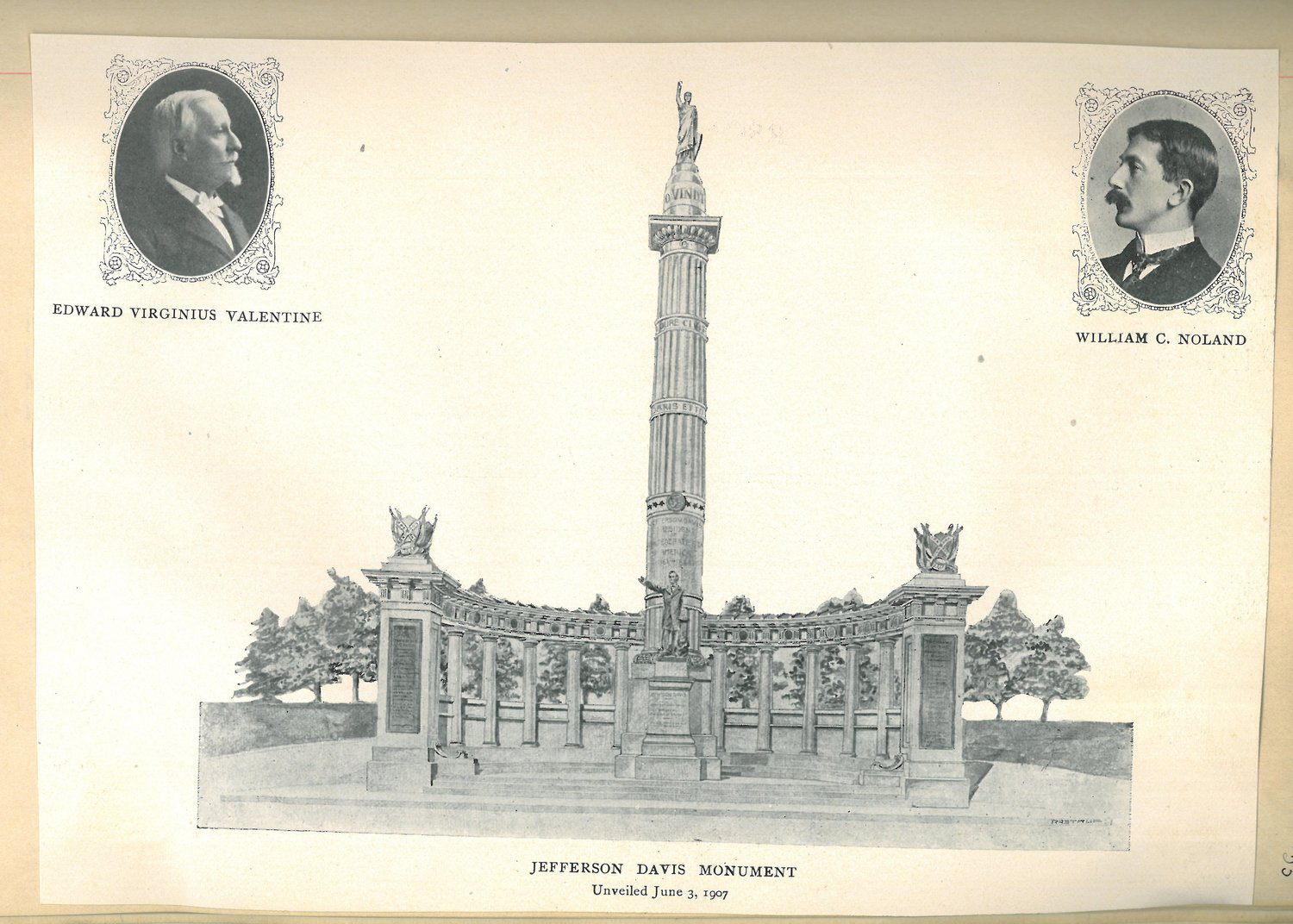The Vindicatrix
The Vindicatrix, ca. 1907. The Valentine, Richmond, Virginia.
Epigraph
“Symbolized in the Vindicatrix which crowns the shaft of the monument erected by the Jefferson Davis Monument Association, the emblem of Southern womanhood, fitly stands, the immortal spirit of her land shining unquenched within her eyes, and her hand uplifted in an eternal appeal to the god of justice and truth. The heroism of Southern women was the inspiration of the matchless bravery of the Southern soldiers. Their hands girded the sash and their hearts fared forth their knights to the field. Now, the days of youth for many of these women lie buried on forgotten battle-fields. But in the twilight of their years they have builded: ‘Love’s memorial unto valor that shall stand while time shall bide.’”
Epigraph, A Souvenir Book of the Jefferson Davis Memorial Association and the Unveiling of the Monument, Richmond, Va., June 3, 1907. (accessed 5-5-18 by M. Waters).
Background
A monument to Confederate President Jefferson Davis was unveiled in Richmond, Virginia—once the Confederacy’s capital city—in June 1907. Along with other Confederate memorials on Monument Avenue, it reflected the Lost Cause rewriting of the South’s past. In this false version of history, slavery was a benign institution, the Civil War was fought over states’ rights, the North won because it had more men and more money but the South was morally superior. Reconstruction was deemed a failure and understood as a time of “Negro rule,” when African Americans had proved incapable of properly exercising their political rights. Reconstruction, not slavery, was blamed for embittering Southern race relations.
These beliefs glorified the Confederacy, and they took hold among many white Americans. The statues along Monument Avenue, and similar memorials throughout the South, honored the virtue and sacrifice of whites who fought to protect slavery, not Black people who suffered under it. White women often led the fundraising campaigns that made it possible to build these memorials.
About the Document
When the Jefferson Davis memorial was unveiled in a massive five-day celebration, Davis’s statue was almost within reach of admirers on the ground. But atop a soaring column behind him stood a female figure known as the Vindicatrix, also called Miss Confederacy. “Vindicatrix” derived from the Confederate motto, Deo Vindice, which is translated as “With God As Our Protector” or “Under God As Our Vindicator.” She represented not only idealized Southern womanhood but the conviction that the Confederacy would be vindicated, cleared of blame for slavery and the war.
Discussion Questions
- Why do you think the Vindicatrix is a woman? What does she represent? Whom does she exclude?
- How would you describe the language used in the epigraph? Why do you think it sounds the way it does?
- How was the Confederacy viewed forty years after the war ended by the people who built and celebrated this memorial?
- What impact would this monument have had on African Americans during this time period?








